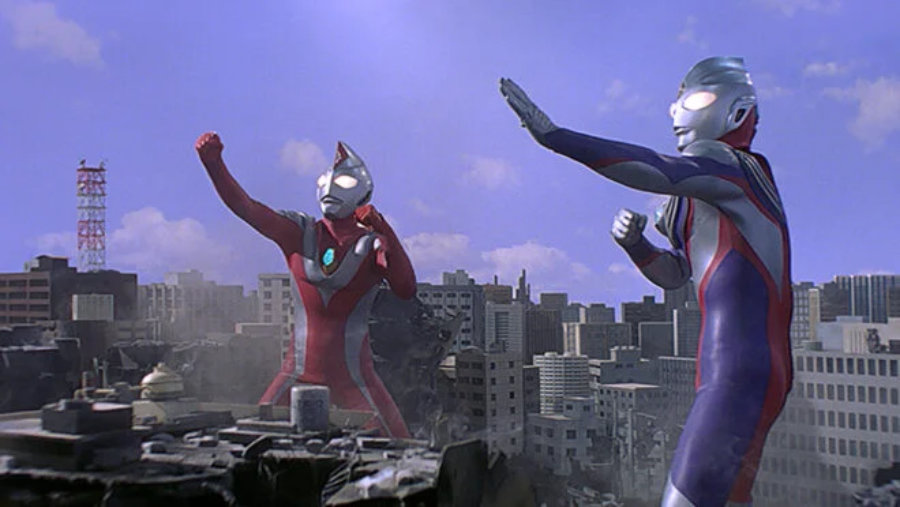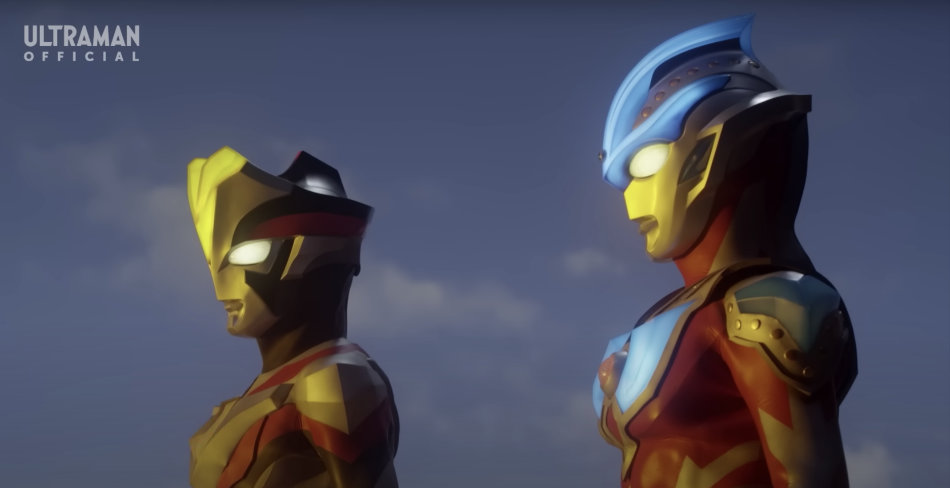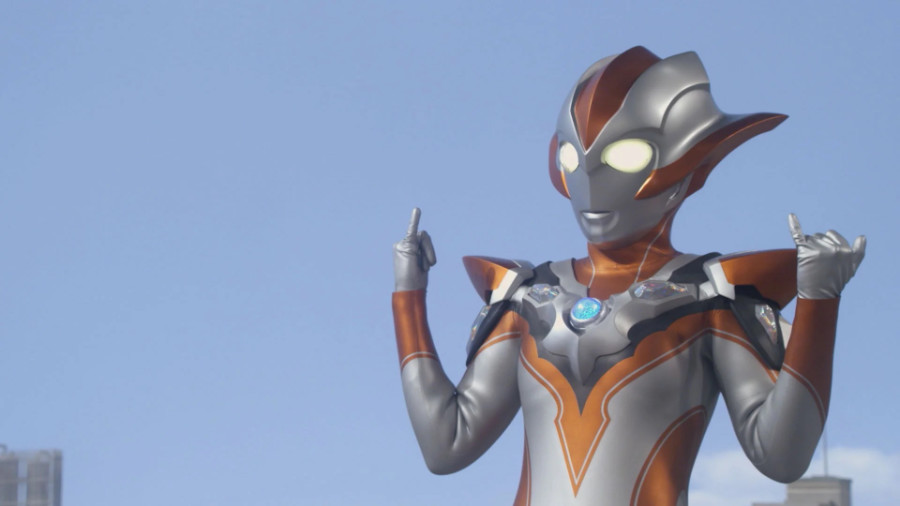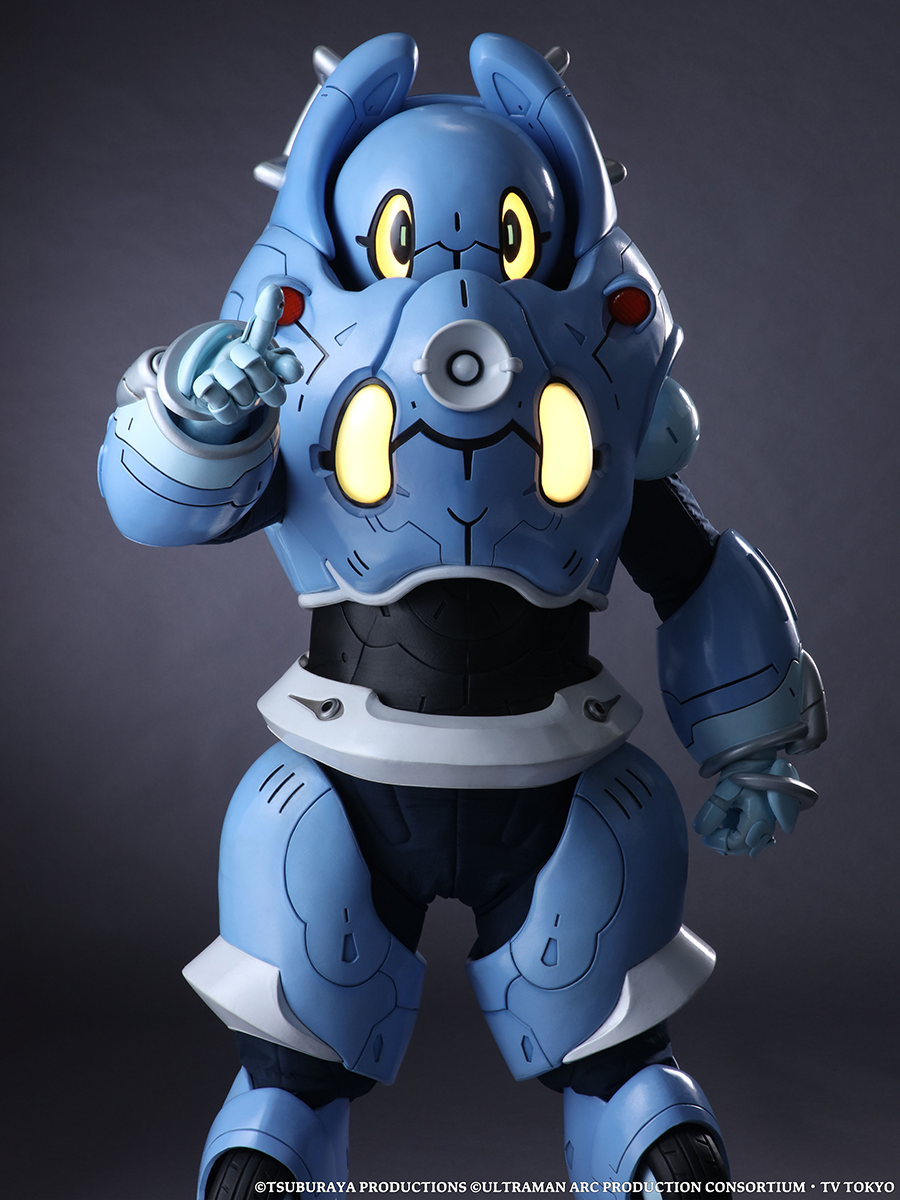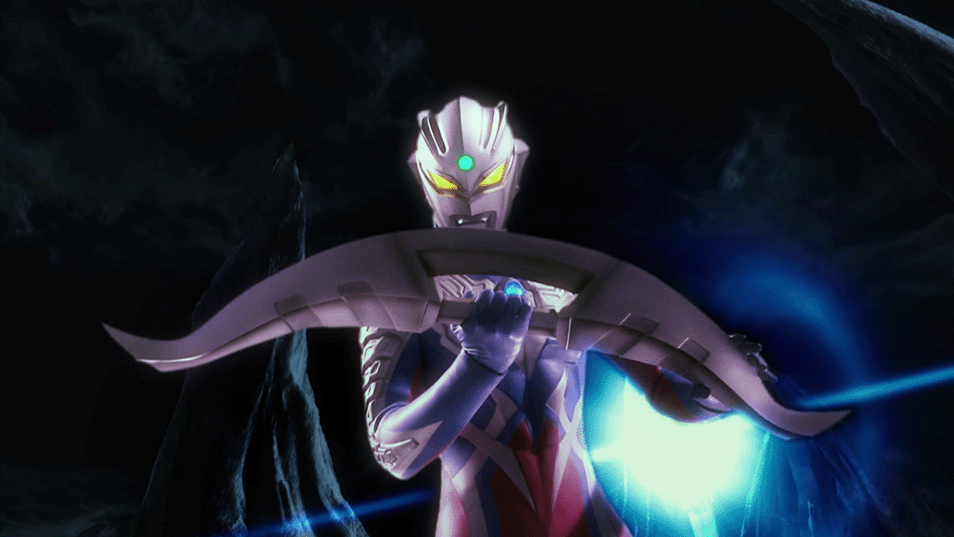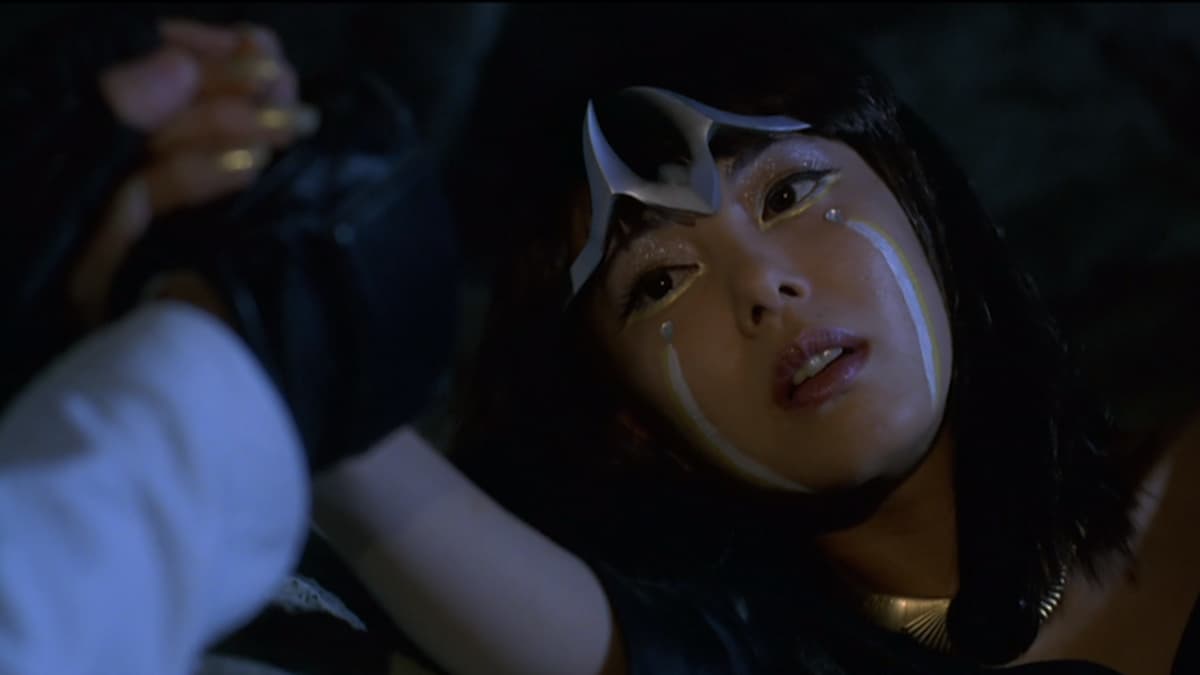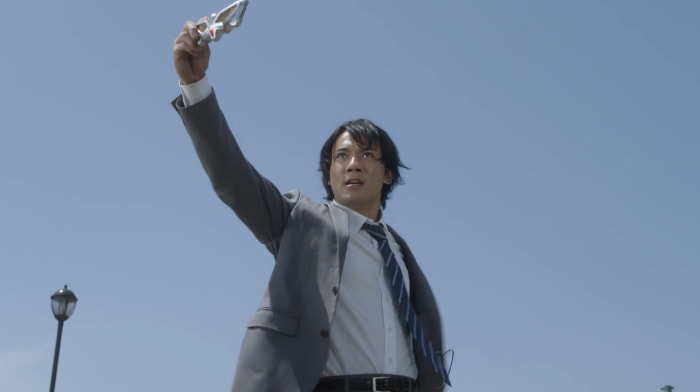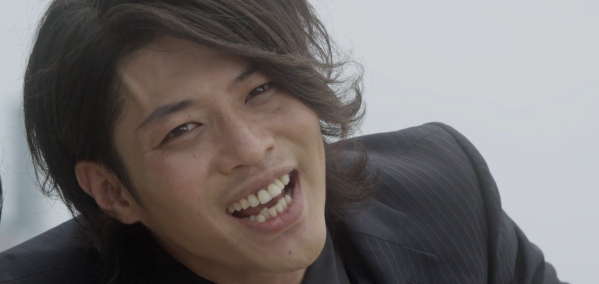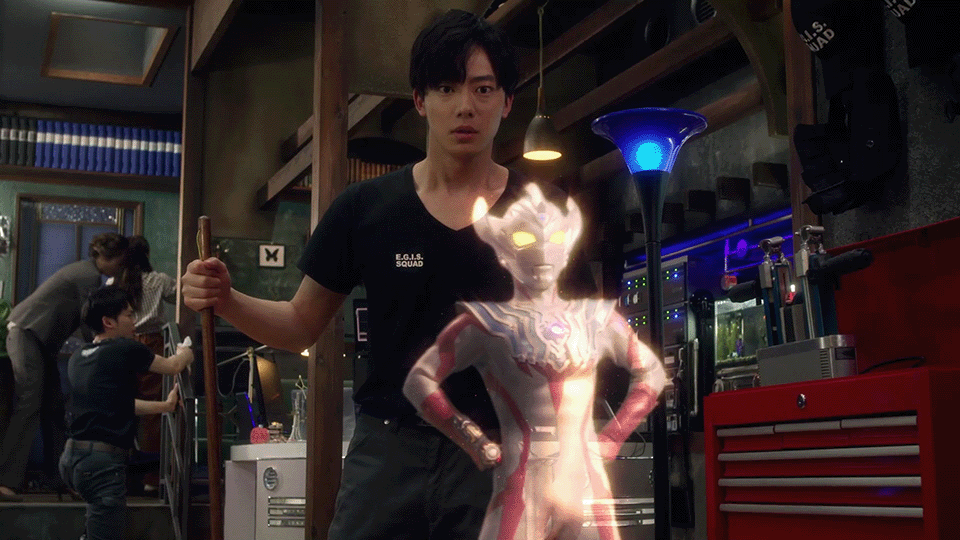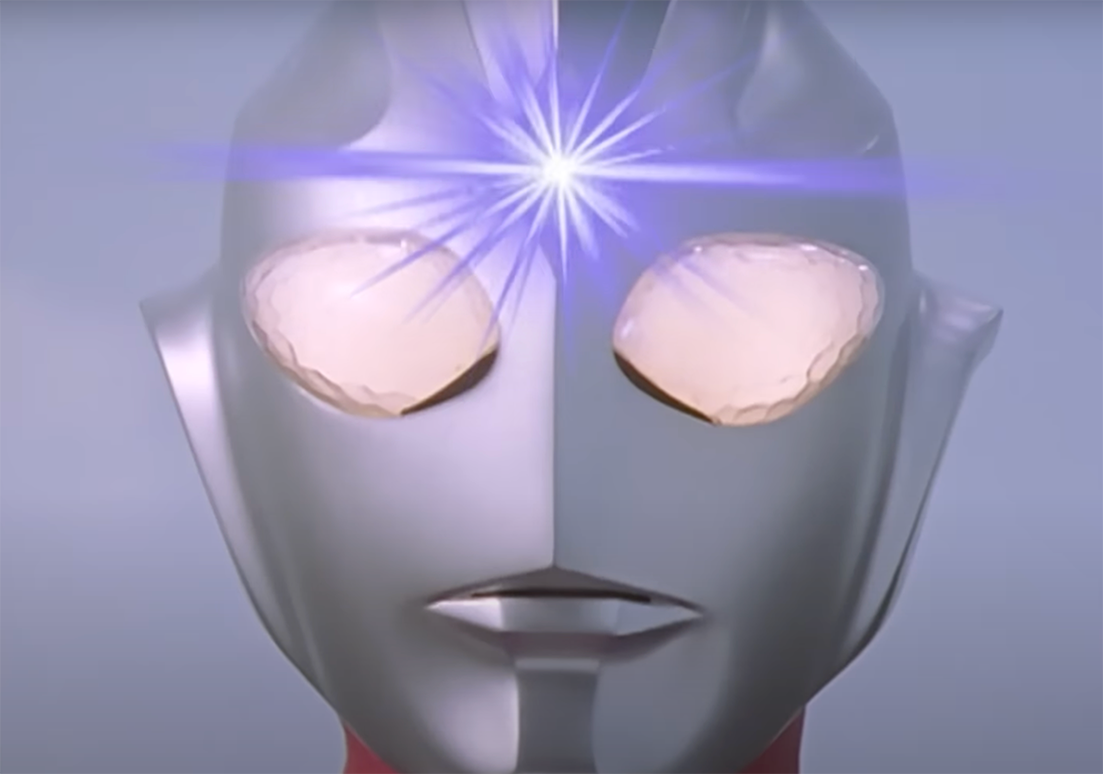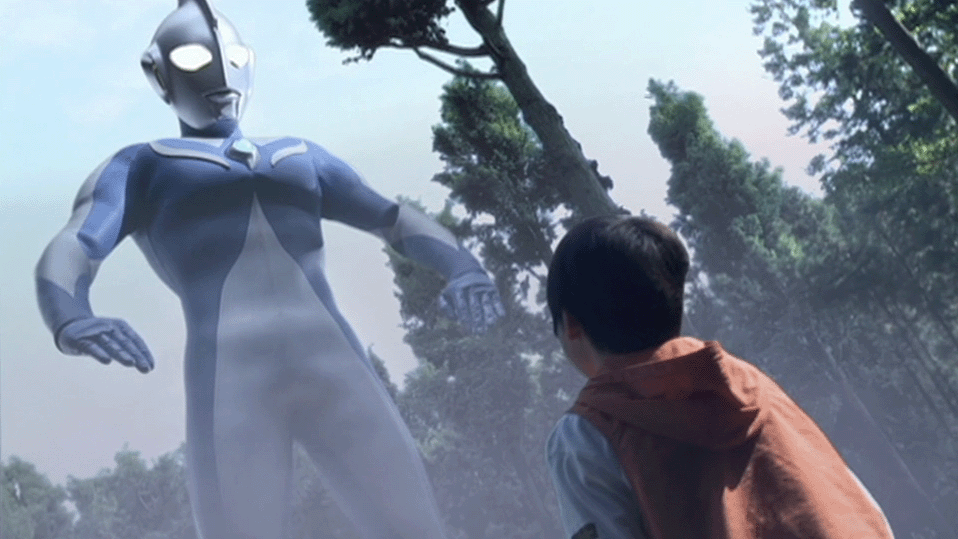Hello, readers, and welcome back to our journey down memory lane this week, as we look at another movie from the “TDG” era of Ultraman – this time incorporating both the T and the D. Before Ultraman Tiga: The Final Odyssey hit theaters in 2000, the shared “Neo Frontier” universe, which incorporated both Tiga and Dyna, was already connected with its own history, lore and crossovers. Some of these were within the Ultraman Dyna series itself, including the three-part finale of the show where the audience finally gets to see… ah, I think I’ll let you watch that one for yourself.
The movie we’re discussing this week, Ultraman Tiga & Ultraman Dyna: Warriors of the Star of Light, was the other major crossover which contextualized the events of both shows. Despite the more elaborate title, this movie actually seems like a smaller, more restrained affair than The Final Odyssey. It’s shorter, first of all. It also takes place within the events of Ultraman Dyna rather than serving as an expansive epilogue like The Final Odyssey was for the Tiga series.
For those of you playing along at home, you can watch it concurrent with basically any part of the show itself, but many of the plot points and characters first introduced here will become relevant again in the finale arc for Dyna. Oh, this is probably a good time to mention, as usual, open spoilers for Warriors of the Star of Light (and Ultraman Decker) will be discussed in the following article. If you haven’t gotten around to watching Dyna or this movie yet on your backlog, you have been duly warned.
Without further ado then, let’s get into it!
Warriors of the Star of Light – sheesh, that’s a lot to type every time – starts just as dramatically as you would expect from a cinematic experience. The movie shows off the full scale of its budget with a thrilling fight between Super GUTS and a new monster, Geranda. Dyna shows up right when things look most desperate, but his own attacks fail to even slow the monster down! Before anyone can get a chance to catch their breaths, or rack their brains for a way to stop this colossal beast, it’s literally vaporized off the surface of the Moon by another attack.
This new superweapon – a space battleship introduced in a scene reminiscent of a Star Wars cold open – turns out to be friendly. Sort of. At the very least, it is also a project of the TPC, the larger global organization which funds and directs the Super GUTS team. Here, the audience is also introduced to (Former) General Sawai who leads the project from his totally-not-a-supervillain’s-island-base.
Seriously, the Super GUTS team is a part of TPC, why do you need armed guards to escort them through the base? Do their security clearances not count for anything?
Actually, considering how our protagonist, Shin Asuka, behaves during this scene, by goofing off in front of security cameras and making offhand wisecracks at every opportunity, that may be a legitimate concern. I mean, would you trust this clown around top-secret weapons technology with this kind of power?
Believe it or not, that question turns out to be more relevant than you might expect. More on that later.
Anyway, General Sawai himself goes on to introduce the mastermind behind the “Prometheus” battleship, the renowned Dr. Kisaragi. The sinister way this project is introduced, and the odd secrecy combined with urgency with which the team is hustled through the exposition, should immediately ping the audience as being suspicious. It’s nice, therefore, to see that the movie also doesn’t waste its time getting around to the big twist it telegraphs so strongly. (The movie is only about an hour long, after all.)
The Prometheus requires some sort of template data, or the experience of a fighting team in order to complete its program and be taken online as a new addition to the TPC’s line of defense. It all sounds like a good idea on paper, but the team has their own misgivings.
Sawai and Dr. Kisaragi both see the ship as a new way to elevate humanity onto the cosmic stage, to be more secure in its protection, rather than just relying on an unknown factor like Ultraman Dyna. Captain Hibiki, steadfast, old-fashioned and stubborn as always, doubts that such a project could ever replace real, living and breathing individuals – especially the ones who compose his own team. He’s about to walk away from the project, but the smug assuredness of its directors land the hook. After all, Shin Asuka is never one to back down from a challenge!
I want to recap this initial scene because it does such a fantastic job of establishing the characters in this story, even if you’ve never seen Ultraman Dyna before this point. You can trust in Captain Hibiki’s leadership, and feel his suspicion of the project. The dynamic of the Super GUTS team as they descend through the base, and are confronted with the dilemma of unrestrained military technological progress, is perfectly illustrated through their comments, jokes and reactions to the exposition as it occurs. You also get a feel for how much of a dork Asuka really is, despite having the power of Ultraman!
Throughout the series itself, Asuka’s cocksure attitude often hides real insecurities, and that comes through here as well. It’s obvious that he’s driven to prove himself as an Ultraman hero, even if that means agreeing to a proposal that is very obviously a trap.
Asuka voluntarily enters the suspiciously-coffin-like chamber where the Prometheus connects to his memories and skills gained through fighting. Then Dr. Kisaragi can’t help but play her hand too early – and reveals that this was all a ploy to trap Ultraman Dyna and steal his strength to power the ship!
By then it’s too late. Asuka wakes up later in a hospital bed after going unconscious and having a horrible nightmare about losing his power. I’m sure that’s just anxiety though, it’s nothing to worry about! He doesn’t have much time to worry anyway, after the base comes under attack by a mysterious UFO with some similarities to the monster they previously fought on the Moon.
Just like before, Super GUTS and Dyna both gear up to protect the base and the lives within it. However, Dr. Kisaragi isn’t just a mad scientist bent on world domination by stealing Ultraman’s strength – she’s being controlled by aliens! The Monera declare their intention to crush humanity by crushing Dyna first, and then immediately follow through on their threats by assuming control of the Prometheus.
If you’ve never seen Dyna before, but thought this opening recap sounded familiar, it’s probably because the “New Generation Dyna” series, Ultraman Decker borrows a lot of concepts and plot points from it. In both stories, we see a brilliant scientist who designs a weapon ostensibly for the secure protection of the Earth, who turns out to be an alien and then uses it as a weapon against humanity instead. While the movie Warriors of the Star of Light doesn’t directly deal with the Spheres as antagonists, there are lots of similarities that probably will spoil the events of Ultraman Decker if you’re paying attention.
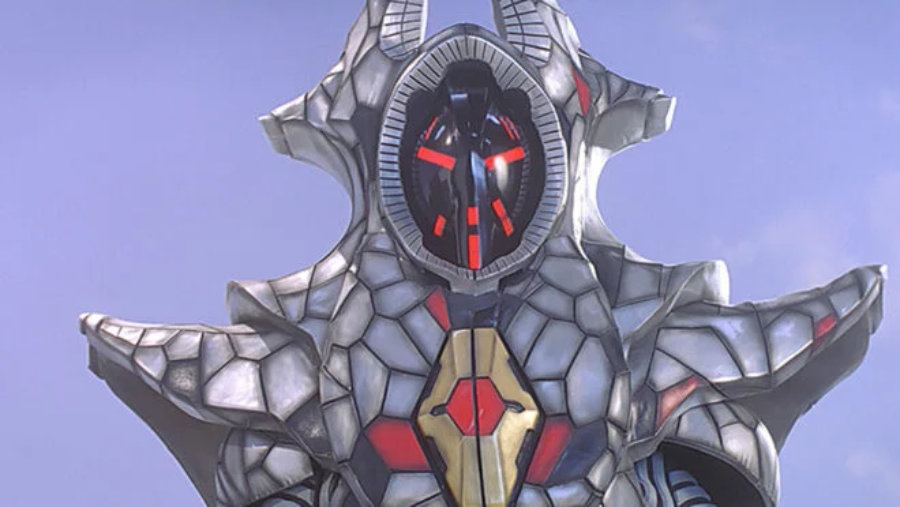
Another detail referenced in Ultraman Decker comes from the design of the Prometheus itself, or rather, its upgraded form as the terrifyingly huge mecha called Deathfacer. Get it? Terraphaser, Deathfacer? They even kept the giant chest cannon for its main weapon! The Terraphaser’s look is clearly influenced by its predecessor here, and just like we saw in Decker, that big Neo-Maxima Cannon also lives up to the hype when wielded against an Ultraman. It seemingly blasts away Dyna, just as it did against Geranda in the opening of the movie.
At this halfway point, there’s already a lot going on. The Earth is seemingly left defenseless, with the Prometheus hijacked and corrupted by malicious alien invaders. Ultraman Dyna himself is assumed to be dead or disappeared. The rest of the Super GUTS team is left reeling, but Asuka’s concern isn’t with his own embarrassing defeat. He knows his own weaknesses and failures all too well – and now, ironically, so do the Monera aliens. What crushes his own spirit isn’t just acknowledging his defeat, but seeing the effect that Dyna’s loss had on his teammates. Especially on Mai, their youngest member, who is left in critical condition after being injured in Deathfacer’s attack.
With such an action-packed first act of this story, the second act is far more subdued in comparison. Asuka explores his own doubts and fears, stuck grounded without the power of Ultraman. In his quest to discover why he lost the ability to become Dyna, and really, what the power of Dyna is in the first place, he goes out to some unexpected places.
First, he meets a young boy who gives him a vinyl doll of Ultraman Tiga, as a symbol of strength to inspire him when he seems depressed. I mean, who wouldn’t look down in the dumps facing the possible destruction of Earth under the threat of a giant killer robot?
But for the first time, Asuka stops thinking about his struggle as a personal battle that he has to bear alone. He’s just seen the impact that Dyna has on his teammates, and how they reacted to seeing him (as Dyna) try to run away from a fight before being defeated. He also starts to consider his role as Ultraman as one which is also shared by his predecessor, Ultraman Tiga, and researches information about the mysterious hero who saved the world five years before. He can’t find any information about Tiga’s identity, of course, but does learn that one of the TPC leaders was the captain of the original GUTS team during the time Tiga was around.
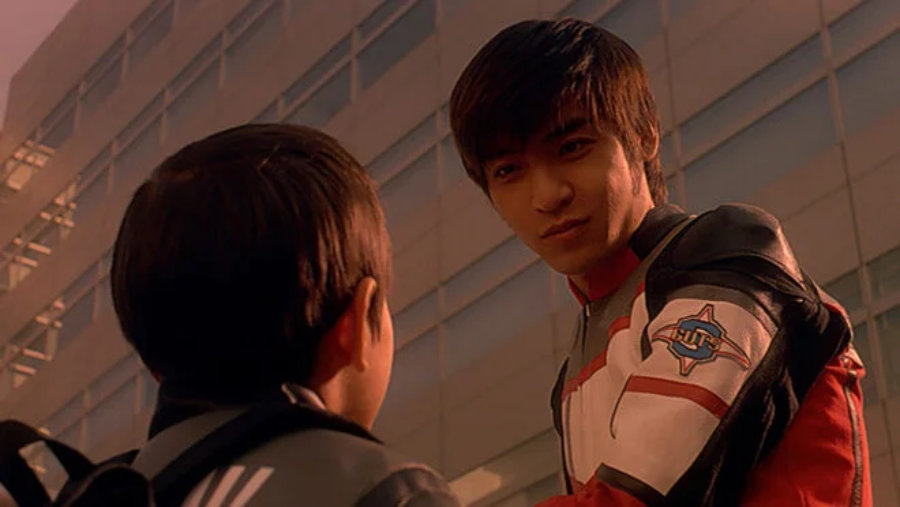
Former-Captain Iruma can’t give him any easy answers either. She can’t tell Asuka where Tiga’s powers came from, or what gave him the strength to defeat all the monsters he faced over the course of the show. However, she can tell him that the power embodied by Tiga is a power shared by many people, rather than just something wielded solely by one individual.
Finally, the lightbulb turns on. It’s a very common human mistake to think of our own struggles and weaknesses as something unique to ourselves, particular and unknowably singular, that others can’t relate to. The big revelation, which helps Asuka to transform into Dyna again, is that his own weaknesses don't necessarily make him a worse hero. Rather, they are things that all heroes, even the other members of Super GUTS and Ultraman Tiga himself, struggle with!
In addition to that, coming at it from the other angle, his role as Dyna also gives other people something to aspire to. Seeing an individual, living and breathing being – Ultraman – continue to rise up and meet those challenges with all his strength, even if he makes mistakes or fails, represents an important ideal for humanity. It is an example of courage and heroism that a cold, clinically-programmed machine like the Prometheus can’t provide. How could humanity aspire to be like a machine with no directive apart from its programming?
With this new inspiration, Asuka is determined to rejoin the battle, and finds his Reflasher to transform into Dyna. The sight of him rising once again inspires the world as they watch him go for round two against Deathfacer. Then, even when it looks like he might fail again, the collective inspiration and hope of humanity brings yet another miracle about.
It’s notable here that Tiga reappears without Daigo himself making an appearance. Instead, it’s implied that this manifestation of the power of Ultraman Tiga represents the same phenomenon which united humanity in that show’s finale. The combined hope of humanity lent Daigo the strength to literally come back from the dead and defeat Gatanozoa. Here, it brings Tiga back into a physical form, to fight alongside Dyna.
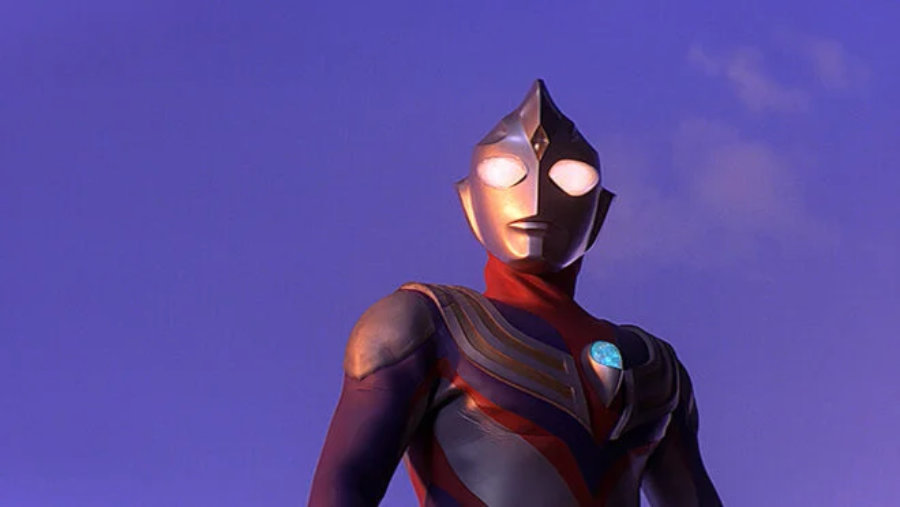
I also love that the power of Ultraman in these shows, and especially in this movie, is never an excuse for our human characters to just sit by the wayside and wait for the Ultra heroes to fix the problem. It was Dr. Kisaragi’s tearful urging – after being freed from the alien Moneras’ brainwashing – which inspired a group of civilians in an evacuation shelter to recall the light of Tiga, and to give strength back to the Ultra heroes.
Captain Hibiki and the Super GUTS team aren’t ones to let Ultraman do all the work either. One of my favorite bits in this movie happens when he leads the charge back into the battle, using the best transportation possible – his own two legs!
With the power of two Ultra heroes combined, they make short work of the twisted, monstrous form of Deathfacer, and depart again with the setting sun in the background. As I said, the movie doesn’t provide any big jaw-dropping twists or secret lore which would be completely new to audiences watching then, or now. But in many ways, I actually like this movie better than The Final Odyssey because of that tighter focus on the here and now of the “Neo-Frontier” universe.
Ultraman Dyna as a whole is a story about “universals” versus “particulars”. Many antagonists, like the Alien Monera here, but also from General Sawai himself (especially later on in the events of the show), only can see the “universals” of humanity, our collective weaknesses and flaws. They pride themselves on their impartial judgment of humanity and then go on to judge individuals within humanity through those wide-sweeping assumptions.
Nobody can really deny their data set. Humans in general are flawed, weak, flimsy and behave in very dumb ways at times. But that’s why such a flawed, sarcastic, stubborn hero was given the power of Dyna in the first place! Through his particular struggle, human beings can relate to him and find hope that they too can be courageous enough to overcome their flaws and failures.
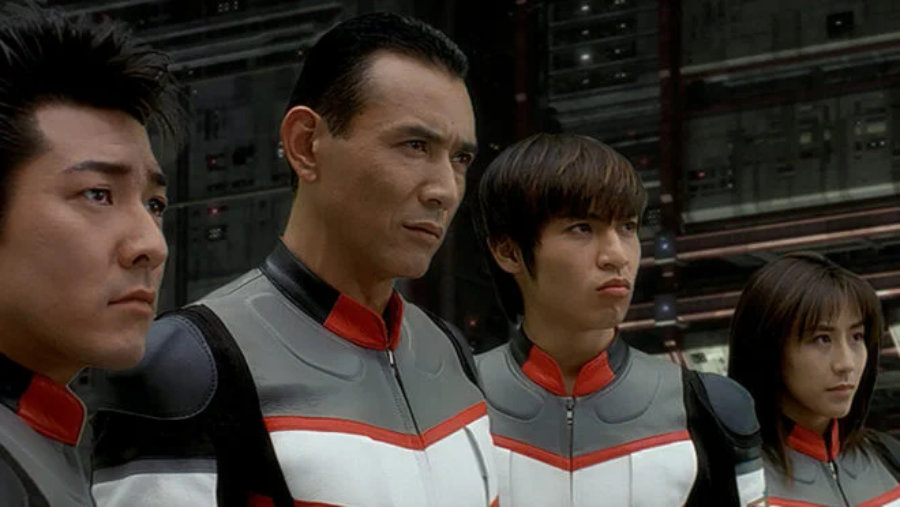
At the same time, in this movie, Asuka’s major mistake came from viewing his role as Dyna as a burden which can only be shouldered alone, and that he alone is responsible for. Realizing that Tiga was also a flawed human being who struggled with his own doubts and fears, and realizing how his own example inspires others beyond himself, helped him to see his own role and responsibility differently. He goes out to fight in the final act not because he is perfectly confident that he is strong enough to beat Deathfacer, but because he knows it is important that he tries. The very attempt – his own particular battle – unites the universal hope of humanity, which is then expressed as the power of Ultraman Tiga.
Ultraman Decker also continues that theme onwards – in a very literal way. Asumi Kanata is a similar character to Asuka, but also fits into a similar legacy as Asuka playing the role of Dyna in this movie. The existence of Ultraman Tiga, and Tiga’s appearance in the final battle, doesn’t negate Asuka’s own efforts or invalidate his achievements. Instead, Tiga’s example gives him confidence that he can also overcome hopeless odds in his own battles. In the same way, Kanata as Decker fights alongside Kengo as Ultraman Trigger multiple times throughout the series.
In a reverse of this movie’s circumstances though, Kanata’s example also goes on to inspire his descendants in the future who share his power as Decker. He even gets a chance to miraculously fight alongside Dyna too! In all these examples, his place within that legacy is a source of strength, rather than a crutch to cling to helplessly.
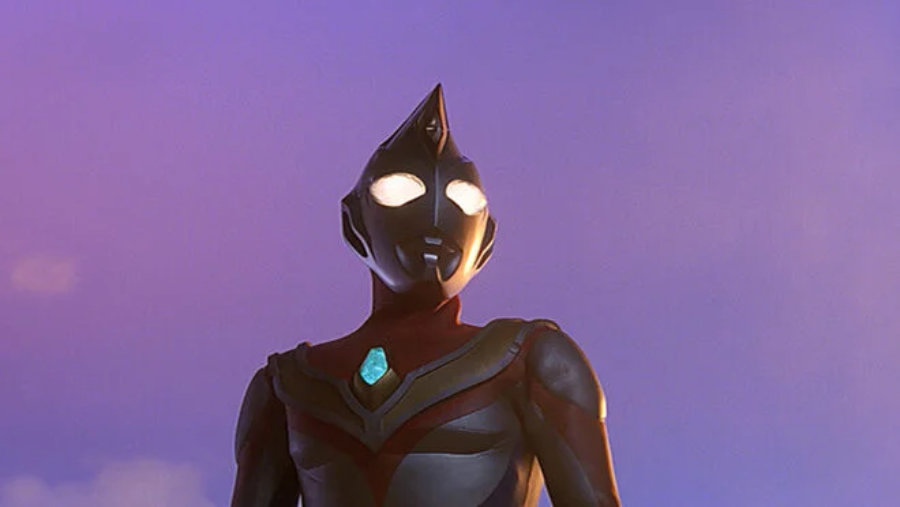
Next week, we’ll amp up that idea of legacy once again, along with extending our movie’s title out even further. Join us next time as we recap and discuss the last crossover movie of the TDG trilogy, Ultraman Tiga, Ultraman Dyna & Ultraman Gaia: Battle in Hyperspace. And don’t forget to catch the next chapter of the legacy of Ultraman Decker when the movie Ultraman Decker Finale: Journey to Beyond will be available for TVOD streaming on February 23rd, right here on Ultraman Connection!
